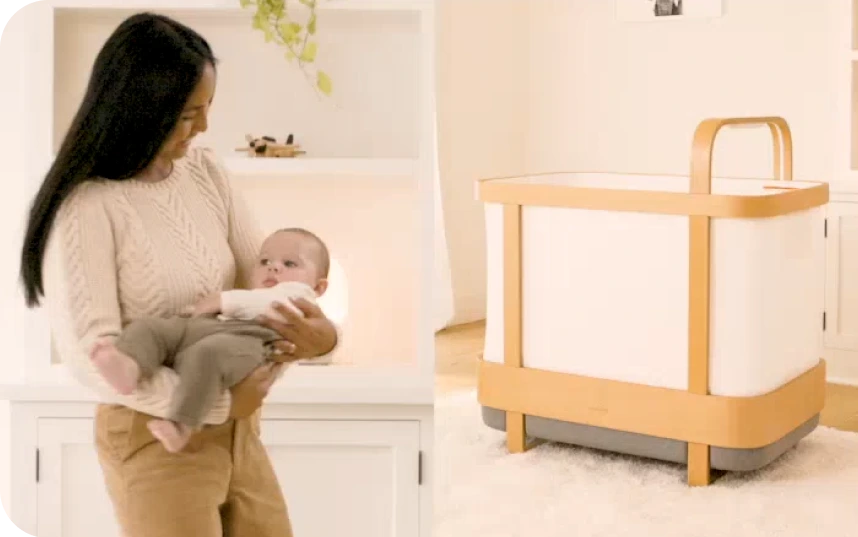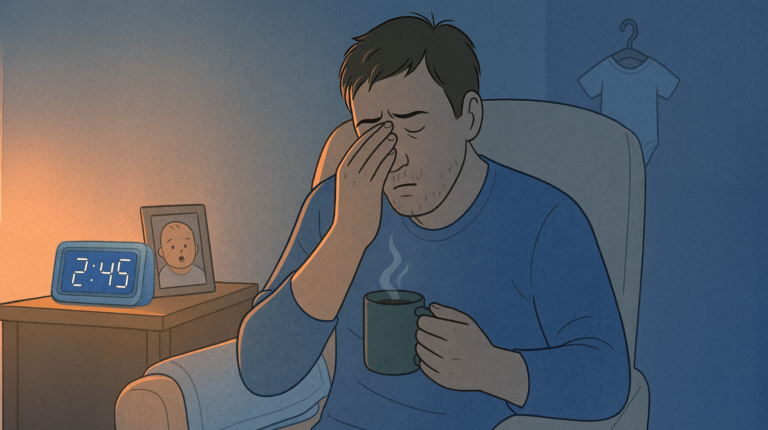Pregnancy is a time full of wonders and surprises, but one of the unexpected ones can be discovering your baby is in a breech position. While it’s not unusual, having a breech baby can cause some anxiety as your due date approaches.
If you’re hoping for a vaginal birth, you’re probably wondering if there’s anything you can do to help your little one turn head down. The idea that simple sleeping positions could make a difference might seem too good to be true—yet there are many who swear by it!
In this blog, we’ll explore what a breech baby is, why it happens, and most importantly, if certain sleep positions can encourage your baby to get into the optimal position for birth. Plus, we’ll share 10 tried-and-tested sleeping positions to help turn a breech baby naturally! Let’s dive in!
What is a breech baby?
A breech baby is a little one who, instead of settling into the typical head-down position for birth, is sitting in the opposite direction with their bottom or feet pointing down toward the birth canal. This is the case in about 3-4% of full-term pregnancies. Think of it like your baby getting cozy in the womb but facing the wrong way for the big day!
Here are the different types of breech positions:
- Frank breech: Baby’s legs are straight up in front of their body, with feet near the head (most common).
- Complete breech: Baby is sitting cross-legged with their bottom down.
- Footling breech: One or both of the baby’s feet are positioned to come out first.
Each position affects how the baby is positioned in the womb and how delivery might be approached.
When does a baby turn head down?
Babies are like little acrobats in the womb, flipping and moving around as they grow. But when does your baby finally settle into the head-down position, ready for the big day? Typically, this happens between 32 and 36 weeks of pregnancy. By then, there’s less room to move, so most babies naturally gravitate toward the head-down position, known as cephalic presentation.
But don’t stress if your little one is still in breech presentation after 32 weeks! Some babies take their time and may not turn to the head down position until closer to 36 weeks—or even later. Every pregnancy is different, and extra time in breech doesn’t always mean something’s wrong. However, if your baby hasn’t flipped by week 36, your doctor may start suggesting ways to help encourage them to turn.

💥Prepare for baby’s arrival with
Black friday deal💥
Ensure they (and you!) sleep better
from day one with Cradlewise.
SEE HOW IT WORKS

💥Prepare for baby’s arrival
with
Black friday deal💥
Ensure they (and you!)
sleep better from day one
with Cradlewise.
SEE HOW
What causes a baby to be breech?
There are a few reasons why a baby might settle into a breech position, and while it’s pretty common, the exact cause isn’t always clear:
- Uterine shape: If your uterus is heart-shaped (bicornuate) or divided by a fibroid, it might limit your baby’s ability to turn head down.
- Amniotic fluid levels: Too much or too little amniotic fluid can affect how easily your baby can move. Less fluid can restrict movement, while too much can make it harder for the baby to stay in a head-down position.
- Multiple babies: If you’re pregnant with twins (or more!), the limited space in the womb can make it tricky for each baby to move into the ideal head-down position.
- Timing: Early in pregnancy, it’s normal for babies to be in various positions. But as the due date gets closer, some babies may remain breech if they’re simply comfortable or haven’t flipped yet.
These factors can all contribute to why your baby might prefer the breech position.

💥 BLACK FRIDAY SALE 💥
Smarter Sleep for Your Baby
An award-winning crib—loved by parents, approved by experts.
0 to 24 months of use
Automatic soothing
Built-in video & sound machine
AI-powered sleep insights
Customizable soundtracks
Get 2 extra hours of sleep nightly
Why is it important to address a breech position?
Addressing a breech position is important because it directly impacts how your baby will be delivered. Most babies naturally flip into a head-down position by the time you’re ready to give birth, which is ideal for a smoother and safer delivery. However, when a baby stays breech (feet or bottom down), things get a bit trickier. This can make vaginal delivery more challenging and increase the likelihood of needing a C-section.
Why? Because the largest part of the baby—the head—isn’t leading the way. When the head is last to exit, there’s a higher chance of complications, like the baby’s body getting through the birth canal while the head gets stuck. By encouraging your baby to flip, you’re increasing the chances of a smoother, safer, and more straightforward delivery for both you and your little one.
So, while breech isn’t an emergency, it’s definitely something to address sooner rather than later to give yourself the best chance at a natural birth!

💥Prepare for baby’s arrival with
Black friday deal💥
Ensure they (and you!) sleep better
from day one with Cradlewise.
SEE HOW IT WORKS

💥Prepare for baby’s arrival
with
Black friday deal💥
Ensure they (and you!)
sleep better from day one
with Cradlewise.
SEE HOW
Can sleeping positions really help in turning a breech baby?
So, can simply changing how you sleep really help flip a breech baby? The short answer: maybe! While it’s not a guarantee, certain sleeping positions are thought to create more space in your pelvis, giving your baby the room they need to move into a head-down position. It’s all about gravity, alignment, and making your body as comfortable and open as possible.
Here’s the science behind it: when you lie in positions that tilt your pelvis forward or lift your hips higher than your chest, you can encourage your baby to shift. These positions aim to use gravity to gently nudge your little one into a head-down position. Of course, it’s not foolproof—your baby might just have their own plan—but these strategies are low-risk and worth a try!
Keep in mind that while these positions can help, they should be part of a holistic approach. Always consult with your healthcare provider, who may suggest combining sleep strategies with other techniques like pelvic exercises or professional guidance from a chiropractor or physical therapist.
Sleeping positions to turn breech baby
The All-Fours Position
Get down on your hands and knees, with your back arched slightly. This position helps create more space for your baby to move and can also relieve pressure on your lower back. It’s like a gentle inversion that could make a difference.
The Side-Lying Position
Lie on your left side with your legs slightly bent. Place a pillow under your belly to support it and keep your uterus in a more optimal position. This may help your baby turn naturally over time.
The Bridge Pose
This yoga-inspired position involves lying on your back and lifting your hips while keeping your shoulders and feet on the ground. It can help open up the pelvis and encourage your baby to shift into the right position.
The Kneeling Forward Bend
Kneel on the bed with your knees wide apart and your torso bent forward, resting your hands on the floor. This position opens the pelvis and can help your baby flip into a head-down position.
The Forward Leaning Inversion
Using a stable surface like a couch or a sturdy chair, place your hands on it and let your body hang down with your hips raised. This inversion can help create more space for your baby to move around.
The Pelvic Rock
On all fours, rock your pelvis gently forward and backward. This movement can help your baby shift and may encourage a change in position. Plus, it’s great for relieving back pain!
The Left Lateral Position
Lie on your left side with your legs straight and a pillow between your knees. This position improves blood flow to the baby and helps create a favorable environment for them to turn.
Remember, while these positions can be helpful, it’s important to listen to your body and consult with your healthcare provider before trying them. They can provide personalized advice and ensure that whatever method you choose is safe for you and your baby.





